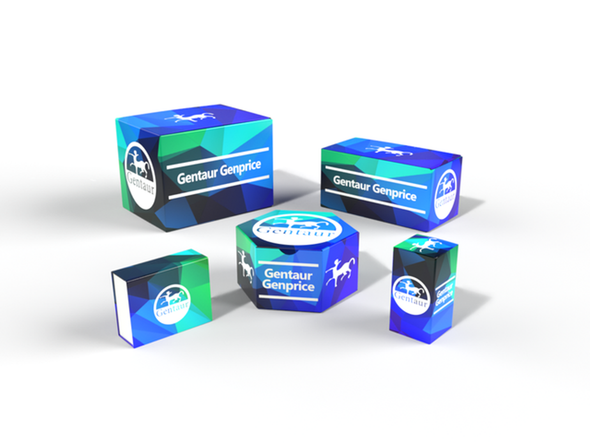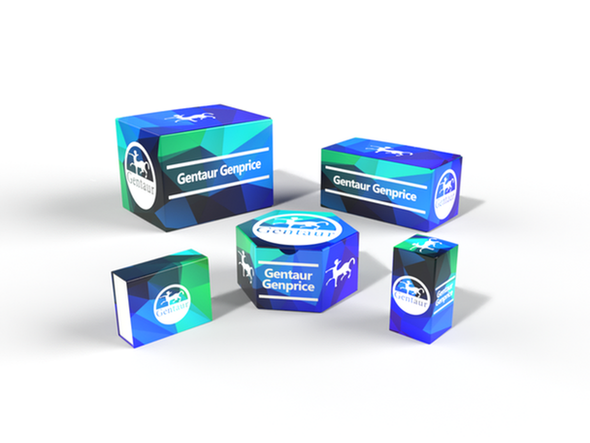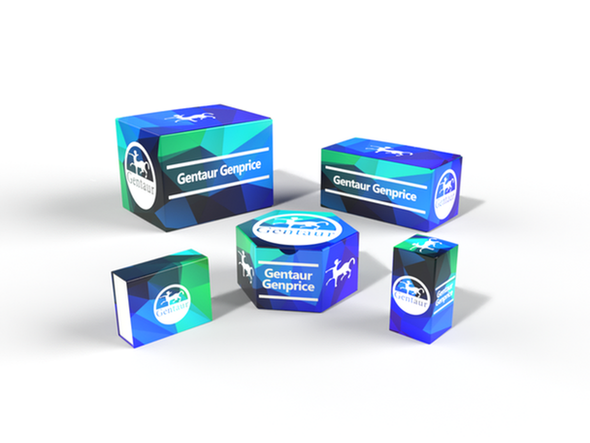Description
PCDHA12 Antibody | 26-394 | Gentaur UK, US & Europe Distribution
Host: Rabbit
Reactivity: Human, Rat
Homology: N/A
Immunogen: Antibody produced in rabbits immunized with a synthetic peptide corresponding a region of human PCDHA12.
Research Area: Membrane, Signal Transduction
Tested Application: E, WB
Application: PCDHA12 antibody can be used for detection of PCDHA12 by ELISA at 1:312500. PCDHA12 antibody can be used for detection of PCDHA12 by western blot at 1 μg/mL, and HRP conjugated secondary antibody should be diluted 1:50, 000 - 100, 000.
Specificiy: N/A
Positive Control 1: Cat. No. XBL-10123 - Fetal Brain Tissue Lysate
Positive Control 2: N/A
Positive Control 3: N/A
Positive Control 4: N/A
Positive Control 5: N/A
Positive Control 6: N/A
Molecular Weight: 99 kDa
Validation: N/A
Isoform: N/A
Purification: Antibody is purified by peptide affinity chromatography method.
Clonality: Polyclonal
Clone: N/A
Isotype: N/A
Conjugate: Unconjugated
Physical State: Liquid
Buffer: Purified antibody supplied in 1x PBS buffer with 0.09% (w/v) sodium azide and 2% sucrose.
Concentration: batch dependent
Storage Condition: For short periods of storage (days) store at 4˚C. For longer periods of storage, store PCDHA12 antibody at -20˚C. As with any antibody avoid repeat freeze-thaw cycles.
Alternate Name: PCDHA12, MGC138485, MGC141932, PCDH-ALPHA12
User Note: Optimal dilutions for each application to be determined by the researcher.
BACKGROUND: PCDHA12 is a potential calcium-dependent cell-adhesion protein. PCDHA12 may be involved in the establishment and maintenance of specific neuronal connections in the brain.This gene is a member of the protocadherin alpha gene cluster, one of three related gene clusters tandemly linked on chromosome five that demonstrate an unusual genomic organization similar to that of B-cell and T-cell receptor gene clusters. The alpha gene cluster is composed of 15 cadherin superfamily genes related to the mouse CNR genes and consists of 13 highly similar and 2 more distantly related coding sequences. The tandem array of 15 N-terminal exons, or variable exons, are followed by downstream C-terminal exons, or constant exons, which are shared by all genes in the cluster. The large, uninterrupted N-terminal exons each encode six cadherin ectodomains while the C-terminal exons encode the cytoplasmic domain. These neural cadherin-like cell adhesion proteins are integral plasma membrane proteins that most likely play a critical role in the establishment and function of specific cell-cell connections in the brain. Alternative splicing has been observed and additional variants have been suggested but their full-length nature has yet to be determined.






